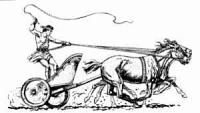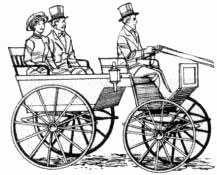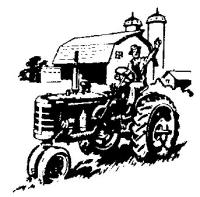ON THIS DAY IN 1776, the Declaration of Independence was approved by the Continental Congress, setting the 13 colonies on the road to freedom as a sovereign nation. As always, this most American of holidays will be marked by parades, fireworks and backyard barbecues across the country.
2.5 million
In July 1776, the estimated number of people living in the newly independent nation.
Source: Historical Statistics of the United States: Colonial Times to 1970
311.7 million
The nation’s estimated population on this July Fourth.
Source: Population clock
FLAGS
$3.2 million
In 2010, the dollar value of U.S. imports of American flags. The vast majority of this amount ($2.8 million) was for U.S. flags made in China.
Source: Foreign Trade Statistics
$486,026
Dollar value of U.S. flags exported in 2010. Mexico was the leading customer, purchasing $256,407 worth.
Source: Foreign Trade Statistics
$302.7 million
Annual dollar value of shipments of fabricated flags, banners and similar emblems by the nation’s manufacturers, according to the latest published economic census data.
Source: 2007 Economic Census, Series EC0731SP1, Products and Services Code 3149998231
FIREWORKS
$190.7 million
The value of fireworks imported from China in 2010, representing the bulk of all U.S. fireworks imported ($197.3 million). U.S. exports of fireworks, by comparison, came to just $37.0 million in 2010, with Japan purchasing more than any other country ($6.3 million).
Source: Foreign Trade Statistics
$231.8 million
The value of U.S. manufacturers’ shipments of fireworks and pyrotechnics (including flares, igniters, etc.) in 2007.
Source: 2007 Economic Census, Series EC0731SP1, Products and Services Code 325998J108
PATRIOTIC-SOUNDING PLACE NAMES
Thirty-one places have “liberty” in their names. The most populous one as of April 1, 2010, is Liberty, Mo. (29,149) Iowa, with four, has more of these places than any other state: Libertyville, New Liberty, North Liberty and West Liberty.
Thirty-five places have “eagle” in their names. The most populous one is Eagle Pass, Texas (26,248).
Eleven places have “independence” in their names. The most populous one is Independence, Mo. (116,830).
Nine places have “freedom” in their names. The most populous one is New Freedom, Pa. (4,464).
One place with “patriot” in the name. Patriot, Ind. (209).
Five places have “America” in their names. The most populous is American Fork, Utah (26,263).
Source: American FactFinder
EARLY PRESIDENTIAL LAST NAMES
138
Ranking of the frequency of the surname of our first president, George Washington, among all last names tabulated in the 2000 Census. Other early presidential names that appear on the list, along with their ranking, were Adams (39), Jefferson (594), Madison (1,209) and Monroe (567).
Source: Census 2000 Genealogy
THE BRITISH ARE COMING!
$98.3 billion
Dollar value of trade last year between the United States and the United Kingdom, making the British, our adversary in 1776, our sixth-leading trading partner today.
Source: Foreign Trade Statistics
FOURTH OF JULY COOKOUTS
More than 1 in 4
The chance that the hot dogs and pork sausages consumed on the Fourth of July originated in Iowa. The Hawkeye State was home to 19.0 million hogs and pigs on March 1, 2011. This estimate represents more than one-fourth of the nation’s estimated total. North Carolina (8.6 million) and Minnesota (7.6 million) were also homes to large numbers of pigs.
Source: USDA National Agricultural Statistics Service
6.8 billion pounds
Total production of cattle and calves in Texas in 2010. Chances are good that the beef hot dogs, steaks and burgers on your backyard grill came from the Lone Star State, which accounted for about one-sixth of the nation’s total production. And if the beef did not come from Texas, it very well may have come from Nebraska (4.6 billion pounds) or Kansas (4.1 billion pounds).
Source: USDA National Agricultural Statistics Service
6
Number of states in which the value of broiler chicken production was $1 billion or greater between December 2009 and November 2010. There is a good chance that one of these states — Georgia, Arkansas, North Carolina, Alabama, Mississippi or Texas — is the source of your barbecued chicken.
Source: USDA National Agricultural Statistics Service
Over 1 in 3
The odds that your side dish of baked beans originated from North Dakota, which produced 36 percent of the nation’s dry, edible beans in 2010. Another popular Fourth of July side dish is corn on the cob. Florida, California, Georgia, Washington and New York together accounted for 68 percent of the fresh market sweet corn produced nationally in 2010.
Source: <http://usda.mannlib.cornell.edu/usda/current/CropProdSu/CropProdSu-01-12-2011_new_format.pdf>
Please Pass the Potato
Potato salad and potato chips are popular food items at Fourth of July barbecues. Approximately half of the nation’s spuds were produced in Idaho or Washington state in 2010.
Source: USDA National Agricultural Statistics Service
More than three-fourths
Amount of the nation’s head lettuce production in 2010 that came from California. This lettuce may end up in your salad or on your burger.
Source: USDA National Agricultural Statistics Service
7 in 10
The chances that the fresh tomatoes in your salad came from Florida or California, which combined accounted for 71 percent of U.S. fresh market tomato production last year.
Source: USDA National Agricultural Statistics Service
Florida
The state that led the nation in watermelon production last year (750 million pounds). Other leading producers of this popular fruit included California, Georgia and Texas, each had an estimate of more than 600 million pounds.
Source: USDA National Agricultural Statistics Service
81 million
Number of Americans who said they have taken part in a barbecue during the previous year. It’s probably safe to assume a lot of these events took place on Independence Day.
Source: Mediamark Research & Intelligence, as cited in the Statistical Abstract of the United States: 2011, Table 1239 # #
Provided by the U.S. Census Bureau News | Facts for Features | May 12, 2011 | http://www.census.gov/newsroom/releases/archives/facts_for_features_special_editions/cb11-ff13.html




